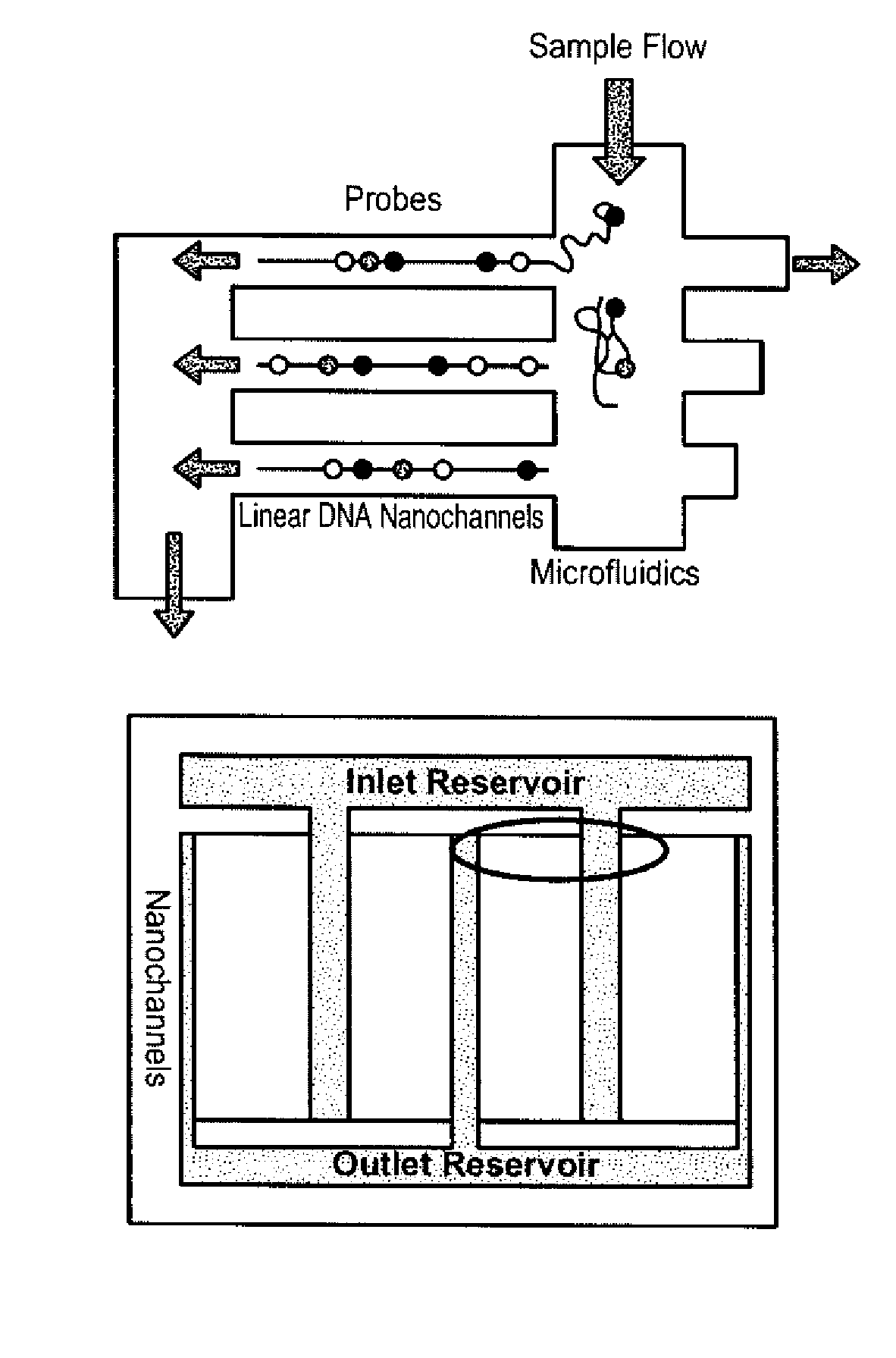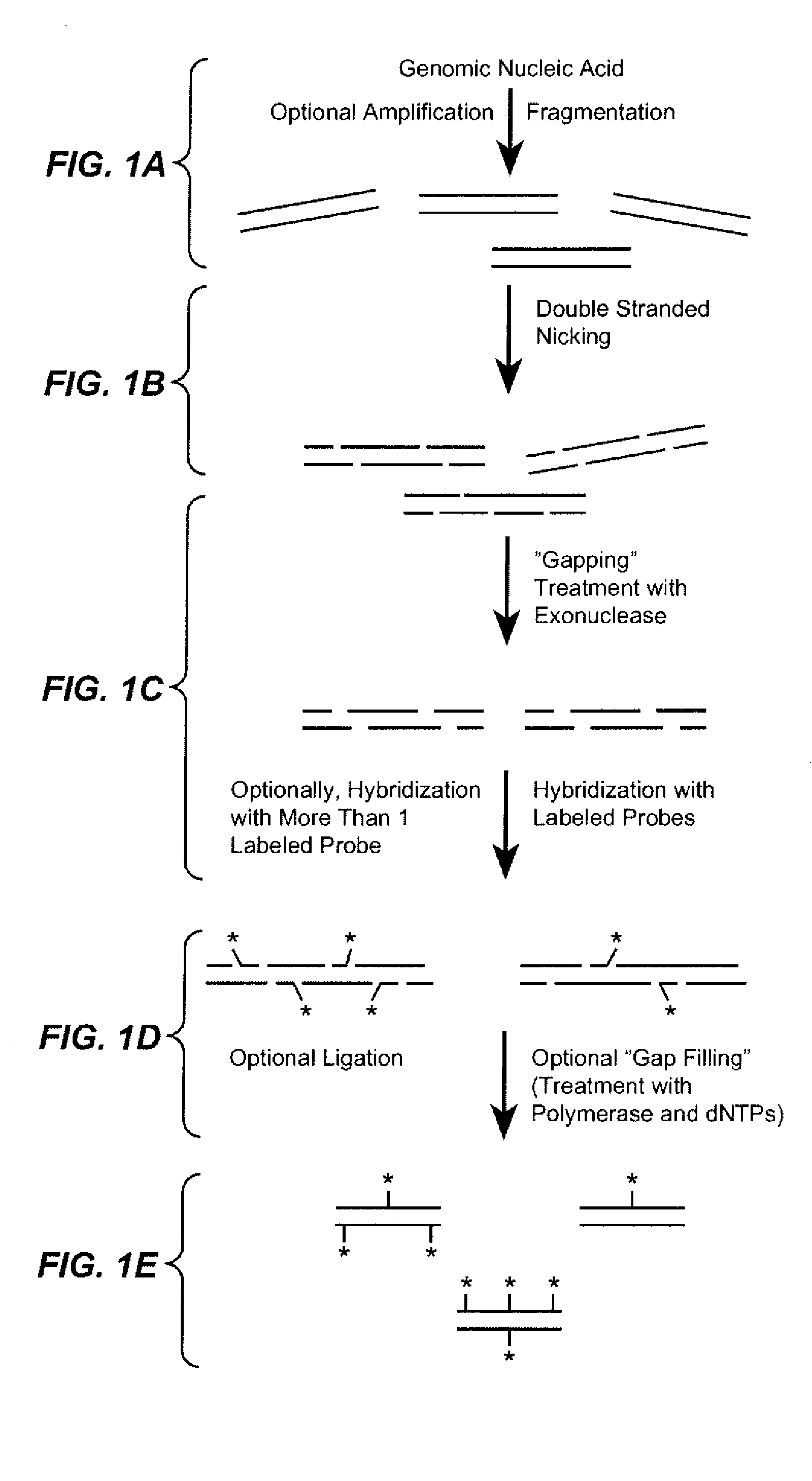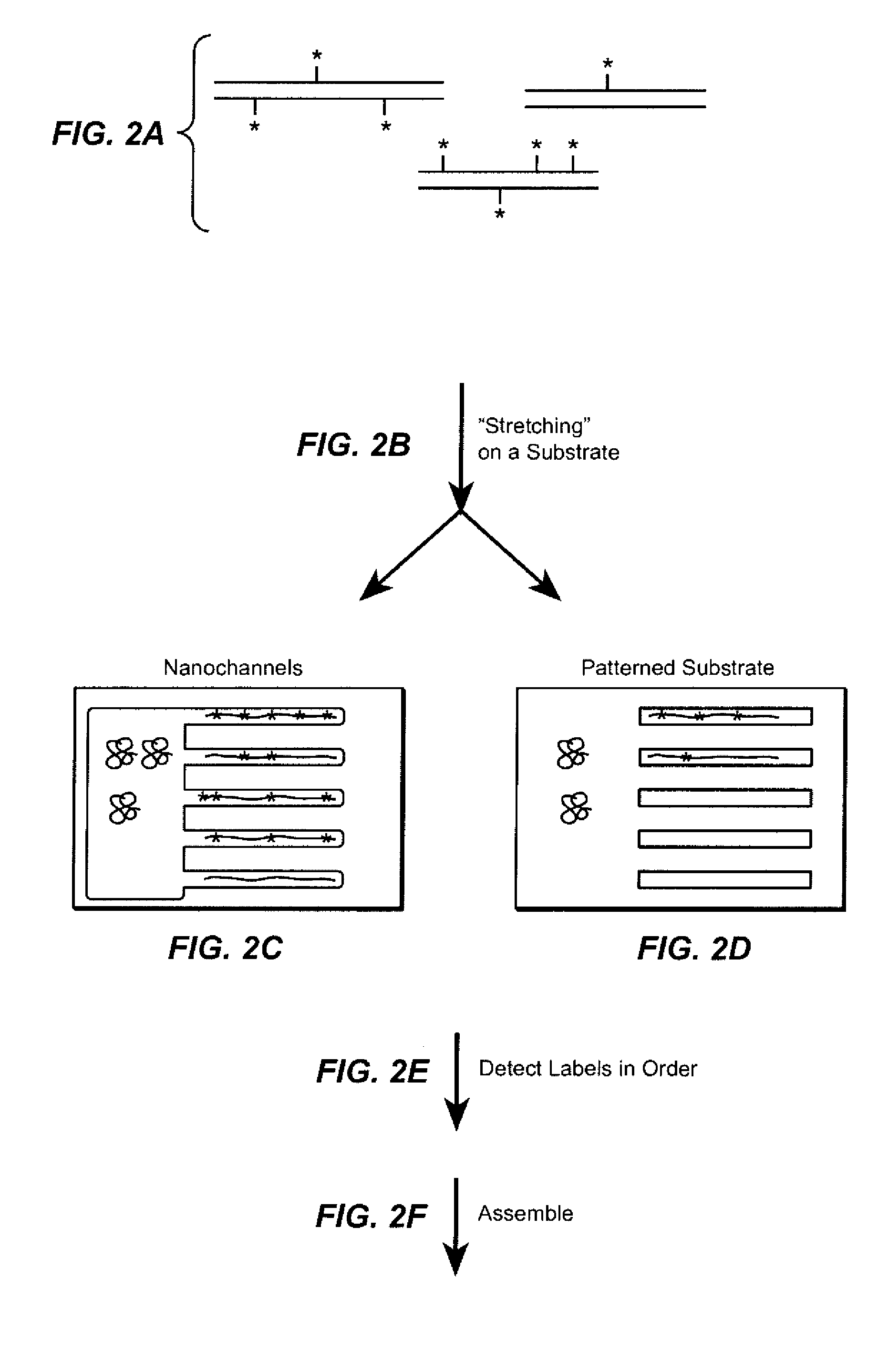Sequence analysis using decorated nucleic acids
a nucleic acid and sequence analysis technology, applied in the field of sequence analysis using decorated nucleic acids, can solve the problems of complex level of sequencing analysis, affecting the applicability of array technologies, and affecting the analysis of the three billion base pairs of human genomes
- Summary
- Abstract
- Description
- Claims
- Application Information
AI Technical Summary
Benefits of technology
Problems solved by technology
Method used
Image
Examples
example 1
Optimizing Buffers for Use in Decorating Nucleic Acids
[0305]For methods of decorating nucleic acids that utilize a combination of nicking enzymes, exonucleases and optionally polymerases and nucleotides and / or ligases, a buffer that is compatible for all four of these enzymes is needed. The following buffer is of use in the present invention:
REAGENTFINAL CONCENTRATION [1X]Watern / aTrizma hydrochloride, pH 7.910 mM(@25° C.)Sodium Chloride50 mMMagnesium chloride10 mMDTT 1 mMdNTPs33 mMATP100 mM
example 2
Restriction Enzyme Digestion of ApoB DNA Upon Treatment with Nicking Enzymes, Exo III and Probe Hybridization
[0306]An ApoB 4.86 kb PCR fragment was nicked with Nb.BbvCI or Nt.BbvCI at 37° C. for 2 hours followed by exo III treatment for 2 minutes at 22° C. The nuclease was then heat-inactivated at 80° C. for 20 minutes. A 24-mer Nb.BbvCI probe was added to the exo III mixture for probe hybridization at 25° C. for 50 minutes followed by 15 minutes of T4 ligase treatment. Restriction enzyme digestion demonstrates that the 24-mer Nb.BbvCI probe hybridized to the gaps generated at the Nb.BbvCI nicks, but not the gaps generated at the Nt.BbvCI nicks.
example 3
Detecting Nucleic Acids Decorated with Qdots
[0307]The decorated nucleic acids (Lambda DNA) were attached to a coverslip coated with poly(allylamine) and poly(acrylic acid), resulting in their stretching. Nucleic acids were decorated with probes labeled with Qdot 605 (Invitrogen) with biotin alkyl amines attached to the 5′ ends. The decorated nucleic acids were stained with the intercalating dye YOYO-1. YOYO-1 was imaged with 488 nm excitation and 520 nm emission. The Qdot 605 was imaged with 590 nm and 630 nm emission. The images were overlaid to show co-localization of the probes and the double-stranded nucleic acid. Qdots are bright and allow for visualization of probes in the expected locations of nucleic acids nicked at a specific site with Nt.BspQI and with a gap opened by limited treatment with exonuclease III.
[0308]In some experiments, the decorated nucleic acids were diluted to 100 pM in sterile TE buffer (10 mM Tris, pH 8.0, 1 mM EDTA) and stained with YOYO-1 iodide (300 pM...
PUM
| Property | Measurement | Unit |
|---|---|---|
| diameter | aaaaa | aaaaa |
| width | aaaaa | aaaaa |
| width | aaaaa | aaaaa |
Abstract
Description
Claims
Application Information
 Login to View More
Login to View More - R&D
- Intellectual Property
- Life Sciences
- Materials
- Tech Scout
- Unparalleled Data Quality
- Higher Quality Content
- 60% Fewer Hallucinations
Browse by: Latest US Patents, China's latest patents, Technical Efficacy Thesaurus, Application Domain, Technology Topic, Popular Technical Reports.
© 2025 PatSnap. All rights reserved.Legal|Privacy policy|Modern Slavery Act Transparency Statement|Sitemap|About US| Contact US: help@patsnap.com



